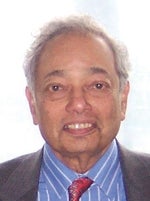When the federal government recently approved a major spending bill, the biggest Massachusetts transportation line item was $30 million for the Fitchburg commuter rail. The idea is that the funds, together with about $120 million already allocated for the rail line, will bring the travel time from Fitchburg to Porter Square in Cambridge from 90 minutes to about 68.
But once the upgrades are finished – in 2012 according to current projections – who will end up riding the rails? Will North Central Massachusetts residents tolerate spending more than two hours a day in transit? Will Boston-area workers swap the Charles River for the Nashua?
Mohammed Khan, administrator of the Montachusett Regional Transit Authority, which is in charge of the rail improvement, says he thinks it will boost commuting from Fitchburg to Boston significantly, but that’s not the only reason it’s a good idea.
Consider The Alternative
Currently, Khan said, despite the fact that the main alternative involves driving through the notoriously congested Concord Rotary area on Route 2, less than 2 percent of people going between Fitchburg and Metro Boston use the train.
A 2007 study commissioned by MART suggests some reasons that’s the case. It said the Fitchburg line was on time only 83 percent of the time in 2005, compared to 91 percent for the commuter rail system as a whole. Only five trains on the line arrive at North Station before 9 a.m.
The planned project includes track improvements to boost trains’ maximum speeds from 60 to 80 miles per hour, the installation of double tracks in some areas to help commuter and freight trains share space and other physical changes to make the ride faster and smoother.
Even before the improvements, Khan said, there are signs that at least some people are willing to make the commute to the Boston area by train. He said that just last summer ridership doubled when gas prices rose dramatically, and though it’s declined some since then it hasn’t dropped to previous levels.
Demographic change may mean more commuting in coming years. According to the 2007 report, the population of the North Central Massachusetts communities served by the rail line was projected to grow 24 percent between 2000 and 2030.
Bargainville, MA
Kahn said Boston-area residents may be willing to trade off commuting distance for cheaper living. Traveling from Cambridge or Arlington on the bus or subway might take only half an hour he said, “but then you look into the other side—the price you have to pay for a half-million dollar property that you have to buy.”
In Fitchburg, he said, a condominium or house with much more space can be had for $250,000.
“If you go to New York or Chicago or Los Angeles, for them an hour is a good time,” Khan said, “So it’s all relative situations.”
Even if many Bostonians don’t decide to brave long commutes and a less cosmopolitan home town, Khan said a faster rail line could have benefits for people a little way down the line. The commute from the Ayer/Littleton area, where I-495 and Route 2 come together, will drop to 45 or 50 minutes, he said, and MART hopes to add a parking lot there.
Industry in North Central Massachusetts could also benefit from the faster rail line, Khan said. He said people from the biotechnology and high-tech industries and the research facilities of Greater Boston are increasingly interested in the related companies springing up in North Central, particularly in Devens.
“They would very much like to come over here and consult and then go back,” he said. “Route 2 being what Route 2 is … I think commuter rail will play an important role.”

